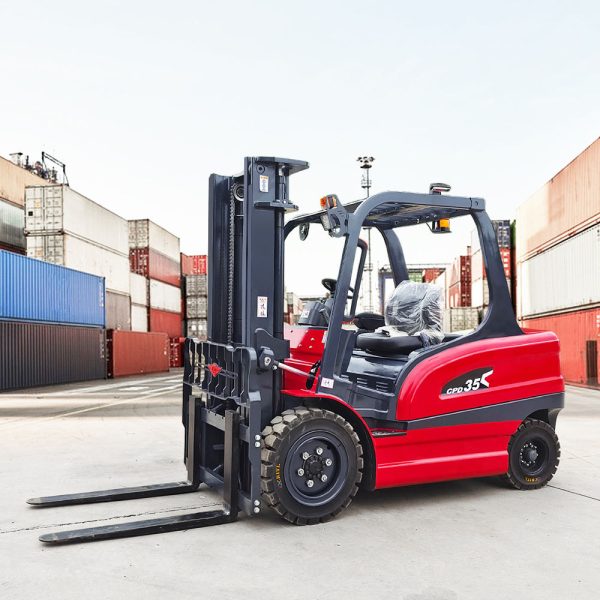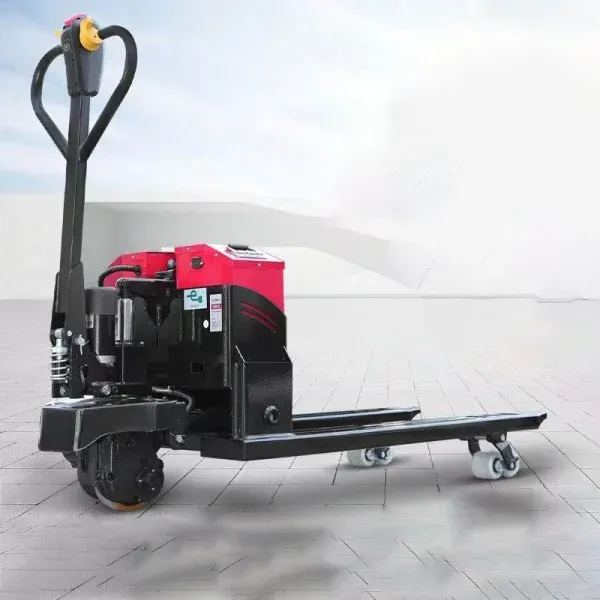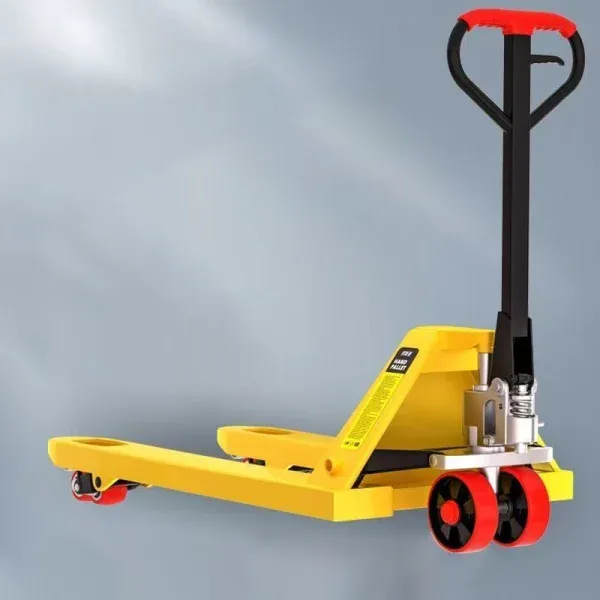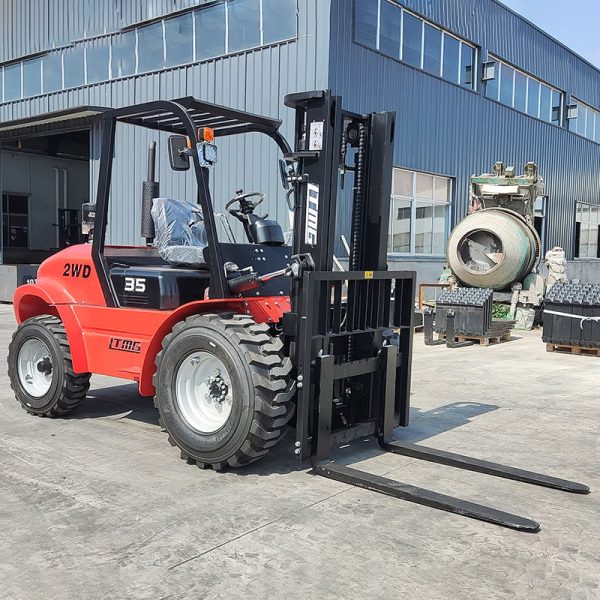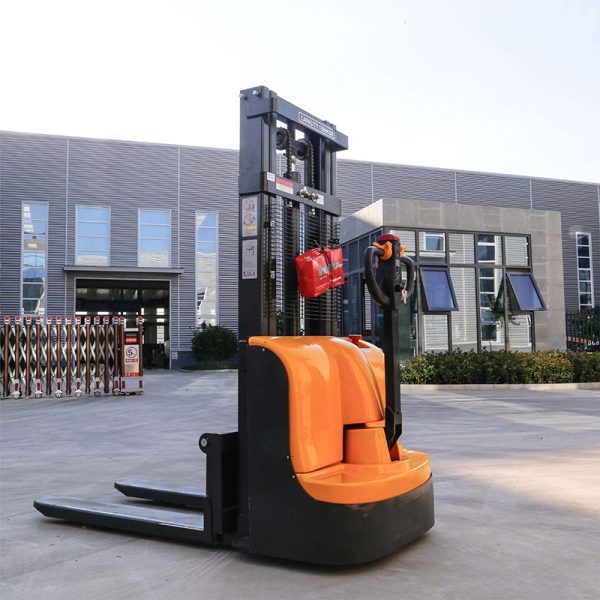Handling equipment · Technical support
1. Introduction to Yuweida Technical Support
Welcome to the official technical support hub for Yuweida Electric Forklifts. This comprehensive guide is designed to provide forklift operators, maintenance technicians, and fleet managers with detailed information for operating, maintaining, and troubleshooting Yuweida electric forklifts, stackers, and pallet jacks. Proper maintenance is essential for ensuring operational safety, maximizing productivity, and extending the service life of your material handling equipment.
This guide covers everything from daily operational checks to advanced troubleshooting procedures. Whether you’re experiencing performance issues or simply want to implement a proactive maintenance schedule, this document provides the expert guidance you need to keep your Yuweida equipment running at peak efficiency.
2. Safety Protocols and Precautions
2.1 Pre-Operation Safety Checklist
Before operating any Yuweida electric forklift, complete the following safety inspection:
- Check overhead guard for structural integrity
- Verify all safety decals and warnings are legible and present
- Test horn, lights, and backup alarm functionality
- Inspect tires for wear, damage, or improper inflation
- Ensure load capacity plate is visible and legible
- Check operator compartment for obstructions and cleanliness
- Verify seat belt (if equipped) is functional
2.2 Battery Safety Procedures
- Always wear appropriate PPE (safety glasses, gloves, and acid-resistant apron) when handling batteries
- Ensure proper ventilation during charging operations
- Never place metal tools or objects on top of batteries
- Use correct lifting equipment for battery replacement
- Familiarize yourself with emergency eyewash and shower locations
2.3 Maintenance Safety
- Always disconnect power before performing maintenance
- Use approved lockout/tagout procedures
- Never work on elevated forks without proper support
- Use only Yuweida-approved replacement parts
For complete safety information, refer to the Yuweida Safety Manual or contact our technical support team.
3. Daily Operational Checks
3.1 Pre-Shift Inspection
Perform these checks at the beginning of each shift:
- Control Functions: Test forward/reverse direction, lifting/lowering, and tilt functions
- Braking Performance: Verify service brake and parking brake functionality
- Steering Response: Check for smooth operation without excessive play
- Hydraulic System: Inspect for leaks, check fluid levels, and test operation
- Electrical System: Verify dashboard indicators, warning lights, and control responses
3.2 Battery System Check
- Check battery charge level and water levels (for flooded batteries)
- Inspect battery connectors for corrosion or damage
- Ensure battery retention system is secure
- Examine battery compartment for debris or damage
3.3 Documentation
Record all daily inspections in the equipment logbook. Note any abnormalities or concerns for follow-up by maintenance personnel.
4. Battery Maintenance and Charging Procedures
4.1 Battery Types and Specifications
Yuweida electric forklifts utilize various battery technologies:
- Flooded Lead-Acid Batteries: Most common type, require regular watering
- AGM Batteries: Sealed design, maintenance-free
- Lithium-Ion Batteries: High energy density, rapid charging capability
4.2 Charging Procedures
For Lead-Acid Batteries:
- Charge in well-ventilated areas only
- Connect charger to battery before connecting to power source
- Allow batteries to cool before charging (if possible)
- Water batteries after charging, not before
- Use only Yuweida-approved chargers
For Lithium-Ion Batteries:
- Can opportunity charge during breaks without full discharge
- No ventilation requirements
- No watering needed
- Maintain between 20-80% charge for optimal lifespan
4.3 Battery Watering Guide
- Use only distilled or deionized water
- Water after charging is complete
- Maintain levels just above plates (follow indicator marks)
- Never overfill batteries
- Check water levels every 5-10 charging cycles
4.4 Battery Changing Procedure
- Position forklift at battery changing station
- Lower forks completely, turn key switch to OFF
- Disconnect and remove battery connector
- Use appropriate equipment to remove battery
- Install fully charged battery
- Connect battery connector securely
- Secure battery retention system
For additional battery information, visit our Forklift Procurement Guide.
5. Common Operational Issues and Solutions
5.1 Forklift Won’t Start
- Possible Causes: Dead battery, faulty key switch, emergency brake engaged, seat switch malfunction, controller fault
- Troubleshooting Steps:
- Check battery charge level and connections
- Verify emergency brake is fully disengaged
- Ensure operator is properly seated
- Check for error codes on display
- Inspect key switch for damage
5.2 Reduced Lifting Capacity
- Possible Causes: Low hydraulic fluid, worn pump, damaged hydraulic cylinder, control valve issues
- Troubleshooting Steps:
- Check hydraulic fluid level and quality
- Inspect for hydraulic leaks
- Test pressure relief valve
- Examine hydraulic filter for restrictions
5.3 Battery Draining Quickly
- Possible Causes: Old battery, improper charging, excessive loads, electrical shorts, driving on inclines
- Troubleshooting Steps:
- Perform battery load test
- Check charging equipment functionality
- Verify proper operating techniques
- Inspect for parasitic draws
5.4 Uneven Fork Movement
- Possible Causes: Uneven tire pressure, misaligned mast, bent forks, worn carriage rollers
- Troubleshooting Steps:
- Check and adjust tire pressure
- Inspect mast alignment
- Measure fork dimensions
- Examine carriage roller condition
6. Error Codes and Diagnostic Procedures
6.1 Understanding Error Codes
Yuweida electric forklifts feature advanced diagnostic systems that display error codes to assist with troubleshooting. These codes appear on the dashboard display and help identify specific system faults.
Common Error Codes:
- E01: Controller communication failure
- E05: Accelerator pedal fault
- E11: Battery voltage too high
- E12: Battery voltage too low
- E21: Hydraulic system fault
- E25: Motor over-temperature
- E30: Controller over-temperature
- E41: Braking system fault
6.2 Diagnostic Mode Access
To access advanced diagnostic information:
- Turn key switch to OFF position
- Press and hold dashboard mode button
- Turn key switch to ON position
- Release mode button after 3 seconds
- Navigate through diagnostic menus using mode and select buttons
6.3 Clearing Error Codes
Most error codes will clear automatically when the fault condition is resolved. Persistent codes may require:
- Cycling power to the forklift
- Using diagnostic menu clear function
- Resetting the main controller
For complete error code information, refer to your model-specific Yuweida Operator Manual.
7. Preventive Maintenance Schedule
7.1 Daily Maintenance
- Clean exterior surfaces
- Check fluid levels
- Inspect tires for damage
- Test safety devices
- Check brake functionality
7.2 Weekly Maintenance
- Inspect brake system components
- Check hydraulic connections
- Examine electrical connections
- Test all safety switches
- Lubricate moving parts as needed
7.3 Monthly Maintenance
- Perform thorough inspection of mast assembly
- Check wheel bearing play
- Test parking brake performance
- Inspect drive motor brushes (if applicable)
- Verify controller settings
7.4 Quarterly Maintenance
- Change hydraulic filter
- Check hydraulic fluid quality
- Test battery specific gravity (flooded batteries)
- Inspect drive axle components
- Check steering system alignment
7.5 Annual Maintenance
- Perform complete system diagnostics
- Replace hydraulic fluid
- Inspect and repack wheel bearings
- Check frame for cracks or damage
- Perform load test verification
8. Electrical System Troubleshooting
8.1 Multimeter Basics
Proper electrical troubleshooting requires a digital multimeter and understanding of these measurements:
- Voltage: Electrical potential difference (Volts)
- Current: Electron flow (Amps)
- Resistance: Opposition to current flow (Ohms)
- Continuity: Continuous path for current flow
8.2 Common Electrical Tests
Battery Voltage Test:
- Set multimeter to DC volts
- Connect leads to battery terminals
- Read voltage (fully charged: 12.7V for 12V battery)
- Test under load for accurate assessment
Connection Resistance Test:
- Set multimeter to ohms
- Disconnect power source
- Measure across connection points
- Reading should be near 0 ohms
8.3 Controller Diagnostics
The main controller is the brain of your electric forklift. Common symptoms of controller issues include:
- Intermittent operation
- Reduced performance
- Error codes
- Complete failure
Controller troubleshooting should only be performed by qualified technicians. Contact Yuweida Technical Support for controller issues.
9. Hydraulic System Maintenance
9.1 Hydraulic Components Overview
The hydraulic system consists of:
- Pump: Creates hydraulic pressure
- Valves: Control flow and direction
- Cylinders: Convert fluid power to mechanical movement
- Tank: Stores hydraulic fluid
- Filters: Remove contaminants
9.2 Common Hydraulic Issues
- Slow Operation: Low fluid, worn pump, restricted filter
- No Operation: No pressure, valve failure, pump failure
- Leaking Fluid: Damaged seals, loose connections, cracked lines
- Noisy Operation: Cavitation, aeration, worn components
9.3 Hydraulic Fluid Specifications
Yuweida forklifts require ISO 15-68 hydraulic fluid with these properties:
- Viscosity Index: Minimum 95
- Pour Point: -24°C (-11°F) maximum
- Anti-wear properties: Denison HF-0 compliant
- Rust and oxidation inhibition
Check your operator’s manual for specific fluid requirements for your model.
10. Tire Maintenance and Replacement
10.1 Tire Types
Yuweida forklifts use various tire types:
- Pneumatic Tires: For outdoor and rough terrain use
- Cushion Tires: For indoor applications on smooth surfaces
- Solid Pneumatic: For environments where punctures are concern
- Polyurethane Tires: Special applications
10.2 Tire Inspection
Regularly check for:
- Wear Patterns: Even wear indicates proper alignment
- Cuts and Damage: Inspect for deep cuts or embedded objects
- Pressure: Maintain proper inflation (pneumatic tires)
- Tread Depth: Replace when worn beyond specifications
10.3 Tire Changing Procedure
- Lift forklift with appropriate jacking equipment
- Remove wheel nuts or bolts
- Remove wheel assembly
- Deflate tire completely (pneumatic)
- Use tire changing equipment to remove tire
- Install new tire
- Inflate to proper pressure
- Reinstall wheel assembly
- Torque fasteners to specification
11. Mast Maintenance and Inspection
11.1 Mast Components
The mast assembly includes:
- Uprights: Vertical members that guide carriage
- Carriage: Platform that holds forks
- Chains: Provide mechanical advantage for lifting
- Cylinders: Provide lifting force
- Rollers: Guide carriage movement
11.2 Mast Inspection Checklist
- Check for bent or damaged uprights
- Inspect rollers for wear or damage
- Examine chains for wear, stretch, or damage
- Check cylinder mounting points
- Look for hydraulic leaks
- Verify proper lubrication
11.3 Mast Alignment Procedure
Misaligned masts can cause:
- Uneven lifting
- Excessive wear
- Reduced capacity
- Safety hazards
Consult your Yuweida Service Manual for proper mast alignment procedures.
12. Brake System Maintenance
12.1 Brake Types
Yuweida electric forklifts utilize multiple braking systems:
- Service Brakes: Hydraulic or electromagnetic
- Parking Brake: Mechanical or electromagnetic
- Regenerative Braking: Converts kinetic energy to electrical energy
12.2 Brake Adjustment
Hydraulic Brakes:
- Check brake fluid level and condition
- Inspect brake pads for wear
- Check rotor/drum condition
- Test brake performance
Electromagnetic Brakes:
- Check brake gap specification
- Test brake engagement
- Verify electrical connections
- Test emergency braking function
12.3 Common Brake Issues
- Reduced Stopping Power: Worn pads, contaminated linings, low fluid
- Dragging Brakes: Misadjusted brakes, stuck calipers
- Noisy Brakes: Glazed pads, contaminated surfaces, worn components
- Pulsation: Warped rotors, uneven wear
13. Software and Controller Updates
13.1 Controller Programming
Modern Yuweida forklifts feature programmable controllers that manage:
- Speed characteristics
- Acceleration rates
- braking intensity
- Hydraulic functions
- Safety parameters
13.2 Software Updates
Periodic software updates may be available to:
- Improve performance
- Address known issues
- Enhance safety features
- Add new functionality
Contact Yuweida Technical Support to inquire about software updates for your specific model.
14. Warranty Information and Claims
14.1 Warranty Coverage
Yuweida electric forklifts come with comprehensive warranty coverage:
- Basic Warranty: 12-24 months depending on model
- Battery Warranty: 24-60 months depending on type
- Structural Components: 60 months
- Controller: 24 months
14.2 Warranty Claims Process
- Contact Yuweida technical support or authorized dealer
- Provide model and serial number
- Describe issue or symptoms
- Provide error codes (if available)
- Complete warranty claim form
- Await authorization for repairs
14.3 Warranty Limitations
Warranty does not cover:
- Normal wear items (tires, brakes, filters)
- Damage from improper use
- Modifications without authorization
- Lack of proper maintenance
- Accident damage
For complete warranty terms, refer to your Yuweida Warranty Document.
15. Emergency Procedures
15.1 Forklift Won’t Stop
- Attempt to turn key to OFF position
- Engage emergency brake
- Shift to neutral if possible
- Avoid obstacles and people
- Allow to coast to stop if safe
15.2 Electrical Fire
- Turn key switch to OFF
- Evacuate area if safe
- Use Class C fire extinguisher
- Disconnect battery if possible
- Contact emergency services
15.3 Hydraulic Leak
- Lower load to ground
- Turn off forklift
- Avoid contact with hydraulic fluid
- Contain spill if possible
- Report incident to supervisor
15.4 Tip-Over Situation
- Stay in operator compartment
- Brace yourself with hands and feet
- Lean away from point of impact
- Do not attempt to jump clear
- Wait for assistance after coming to rest
16. Technical Support Resources
16.1 Online Resources
16.2 Contact Information
For technical support:
- Email: support@forklifte.com
- Phone: [Your support number]
- Online Portal: [Your support portal URL]
- Emergency Support: Available 24/7 for critical issues
16.3 Training Resources
Yuweida offers comprehensive training programs:
- Operator certification
- Maintenance technician training
- Safety programs
- Customized on-site training
Contact your Yuweida representative to schedule training for your team.
Conclusion
Proper maintenance and operation of your Yuweida electric forklift is essential for safety, productivity, and equipment longevity. This technical support guide provides comprehensive information for maintaining your investment, but always prioritize safety and consult qualified technicians for complex issues.
For additional support with your electric forklifts, rough terrain models, or pallet jacks, contact Yuweida technical support or your local authorized dealer. Our team of experts is ready to help you maximize the performance and lifespan of your material handling equipment.
This document is updated regularly. Check our technical help center for the latest version and additional resources.

